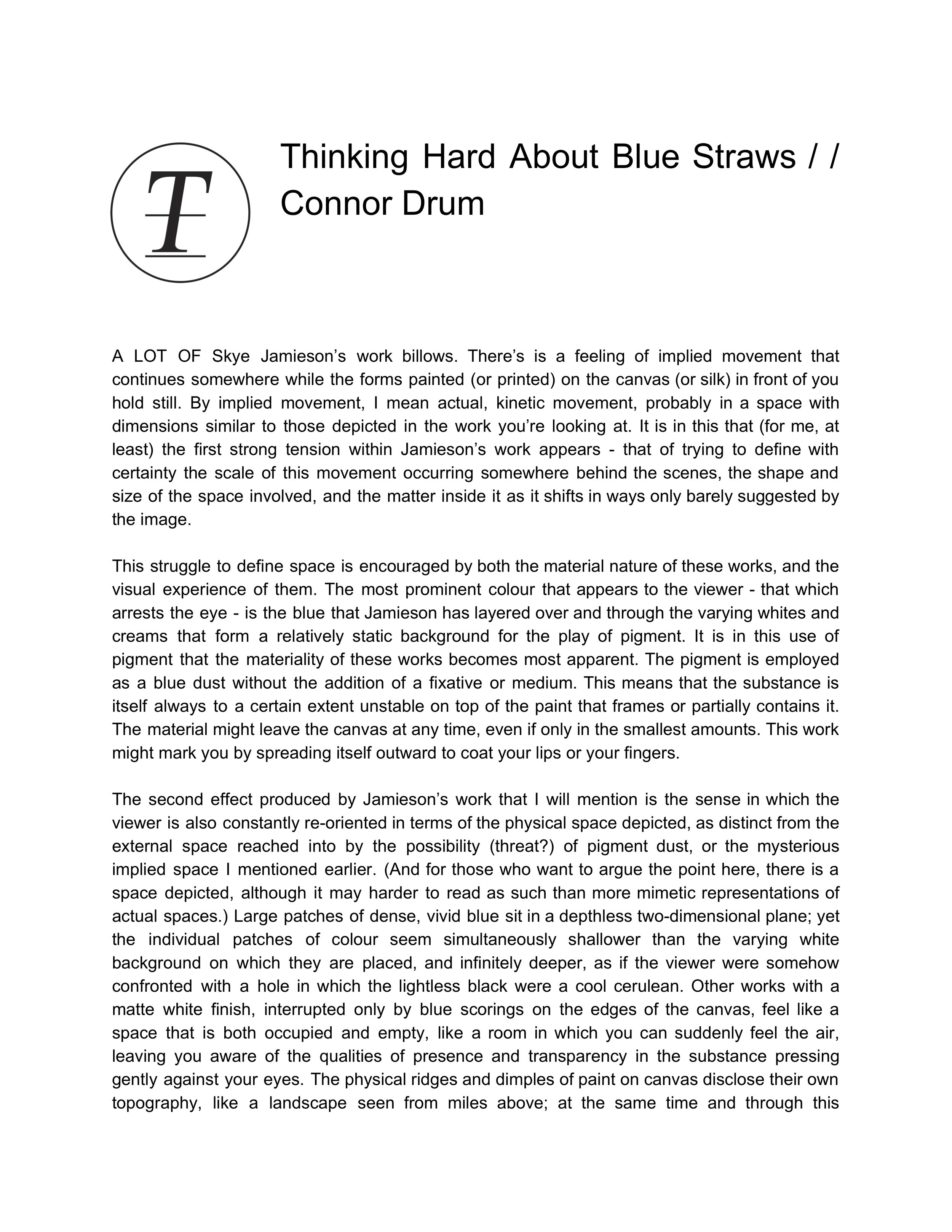Working with olive oil, pure pigment, oil paint and china clay, Skye Jamieson’s paintings are moulded and shaped to reveal immediate impressions of her environment. Each of four diptychs is a psychogeographic exploration ‘documenting’ Canberra’s cityscape as she drifts through the streets in a state of acute awareness. Jamieson’s approach can be linked with the Situationists’ (1957-1972) idea of dissolving the boundaries between life and art, and her every work is a journey of discovery in which she exchanged distance for depth. As is the case with many forms of abstraction, the ways that Jamieson’s paintings connect with audiences depends on her ability to communicate feelings and to present views of the city that are not pictorial but emotional. These minimal pieces, the result of much experimentation with unfamiliar materials, are a slow burn as Jamieson eschews drama for the quiet intensity that has characterised her work to date. In their succinct subtlety she distracts an audience overwhelmed by the glamour of consumerism, (such as television and computer games) ultimately providing welcome relief from the pace and pressures of everyday life. Jamieson’s new work proposes inventive strategies for exploring the city, or any other inhabited space, by straying from predictable paths and inspiring awareness of intuition as a catalyst for cognisance.
Jamieson’s unique brand of abstraction with patches of blue also owes a little (less than usual) to Yves Klein and the Nouveau Realism movement (1960s), noted for finding new ways of presenting and perceiving reality. The approach of both the New Realists and the Situationists connects directly with the discovery of familiar things we encounter in the streets, but don’t necessarily notice. The challenge for artists such as Jamieson therefore, is to find innovative ways of seeing the ordinary. Thus the fluidity achieved through her ostensibly free-form manipulation of china clay juxtaposed with the adjacent blues, mimics the flow of water, a recurrent presence in Jamieson’s work. Acutely aware of her physical relationship with water through, for instance, puddles, drains, dew and sprinklers, she strips her environment to reveal observations of presence and a sense, positive and negative, in worlds where natural and artificial converge. The properties of flowing water might also stand as a metaphor for the ways that Jamieson and her audience come together, in an essentially tranquil place, free of modernity’s ambient noise, where the artwork flows over and immerses the viewer in a state of quiet disquiet.
David Broker, Canberra Contemporary Art Space
Excerpt from the supporting essay for Promise Paintings (Leighton Contemporary, 2025) written by Jessica Leighton
Skye Jamieson’s work engages with water, light and her environment. Her painting and drawing practice can be
understood as a restorative process. Incorporating ceremony and bodily intuition into her making, she offers the
space for serendipity and balance to come forward as a co-creating power. Blue, oils and plasters are recurring
elements in her work just as they are recurring motifs in the urbanity in which she lives.
At first encounter, it’s evident that both artists work from a deeply embodied place. Northwood moves
expressively, allowing internal sensations and emotional states to guide her gestures. Her process is physical,
intuitive, and often rhythmic, creating work that feels immediate and alive. Jamieson approaches the studio with
a quiet attentiveness—her body a compass, her movements deliberate, shaped by a practice of listening,
preparing, and responding.
Themes of connection and reciprocity are woven throughout the exhibition. The title, promise paintings, speaks
to the trust and care involved in forming and sustaining relationships—with each other, with place, with practice.
The artists engage in a dialogue—not only through their individual works, but through their shared process, their
affinity for natural materials, and the spaces between them. There is also a subtle choreography at play between
the paintings themselves, and between artwork and viewer.
Each artist brings a distinct rhythm and tone. Northwood’s work is bold and expressive, rooted in sensory
experience and emotional release. Jamieson’s is slower and contemplative, shaped by repetition, restraint, and
the quiet rituals of making. Together, their practices reflect a shared commitment to presence, process, and the
subtle conversations that emerge through paint.
written by Chloe Borich, Jerico Contemporary


